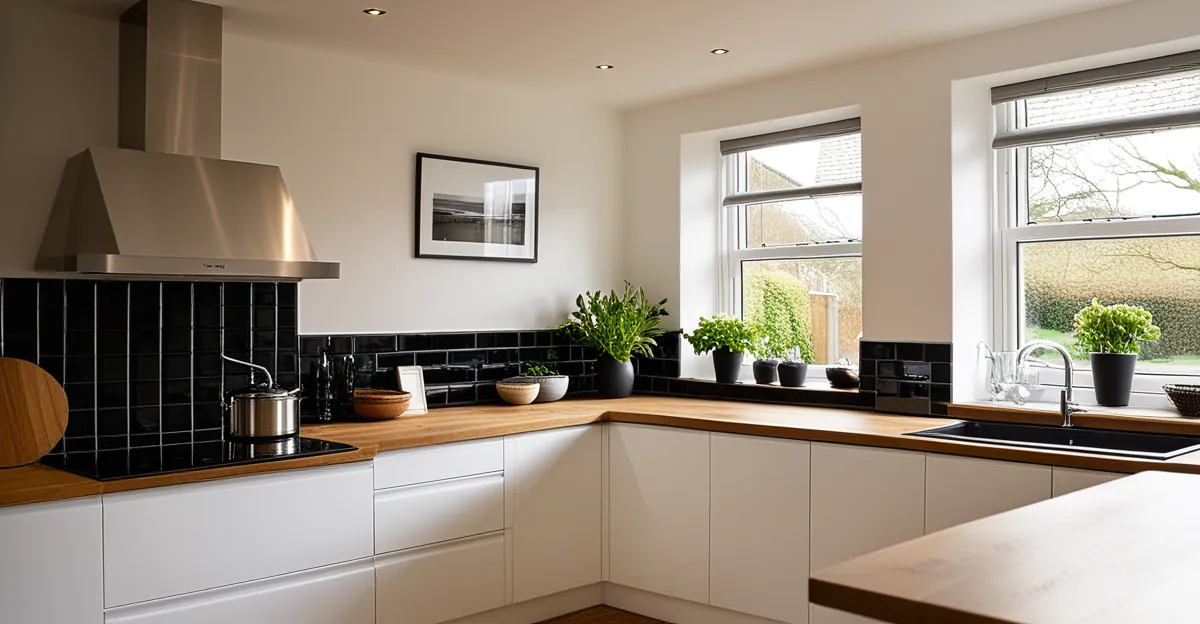Essential Insulation and Draught-Proofing Strategies for UK Homes
Improving insulation and draught-proofing is crucial for enhancing energy efficiency in UK homes, especially given the typically damp and chilly climate. Prioritising loft and wall insulation can dramatically reduce heat loss, keeping homes warmer for longer and reducing energy bills. Loft insulation works by trapping warm air inside your home, preventing it from escaping through the roof, while cavity wall insulation fills the gaps within walls to block the transfer of cold air.
Blocking draughts around areas such as windows, doors, and floorboards is equally important. These small gaps can allow cold air to seep indoors and warm air to escape, undermining even the best heating systems. Applying draught excluders, sealant strips, or even secondary glazing to windows can help seal these leaks effectively.
Also read : How Can Home Décor Choices Reflect Personal Style in the UK?
When selecting insulation materials for older UK properties, cost-effectiveness and compatibility with the existing structure are key. Traditional options like mineral wool and foam boards offer strong performance at reasonable prices, but newer eco-friendly materials such as sheep’s wool or recycled cotton are gaining popularity for their sustainability and breathability. Choosing the right insulation not only optimises energy efficiency but also maintains healthy moisture levels within walls, preventing dampness.
Overall, combining loft and wall insulation with careful draught-proofing lays a strong foundation for a warm and energy-efficient home, balancing upfront investment with long-term savings.
Also to see : What are the must-have smart home gadgets for UK living?
Effective and Efficient Home Heating Solutions
Ensuring optimal heating solutions is vital for maintaining comfort and reducing energy costs in UK homes. Central heating remains the most common method, often powered by gas boilers suited to the UK climate. However, assessing your current system’s efficiency can unlock significant savings. Regular servicing and timely upgrades help boilers operate at peak performance, minimising fuel waste and ensuring consistent warmth.
To further enhance energy saving, programmable thermostats allow precise control over heating schedules, preventing unnecessary heating when no one is home. By tailoring temperature settings to daily routines, these devices reduce energy consumption without compromising comfort.
Radiator reflectors are another cost-effective measure. Positioned behind radiators, they reflect heat back into the room rather than letting it escape through external walls. This simple addition can noticeably improve heating efficiency.
Alternative heating options, such as heat pumps or electric radiators, are increasingly viable as technology advances and renewable energy becomes more accessible. Evaluating these alongside your central heating can identify the best solutions to meet your home’s specific needs while considering long-term energy efficiency, especially given changing UK climate demands.
Transforming Spaces with Soft Furnishings and Textiles
Creating a warm and inviting space in UK homes goes beyond insulation and heating; soft furnishings play a vital role in enhancing comfort and energy efficiency. Thermal curtains and lined blinds are excellent tools for draught-proofing windows. These additions trap heat inside and reduce cold air infiltration, complementing existing insulation efforts. Using such window treatments three times or more during colder months can significantly maintain a room’s temperature.
Throws, cushions, and area rugs add tactile coziness while layering warmth. Rugs not only insulate floors but also reduce heat loss through draughts at floorboards, further improving energy efficiency. Choosing durable and easy-to-clean textiles suited for the often damp and variable UK climate ensures longevity and practicality. Incorporating these soft furnishings boosts comfort while supporting your home’s overall warmth strategy without excessive energy use.
By thoughtfully selecting and arranging throws, rugs, and curtains, you create inviting rooms that genuinely feel cosy throughout the year. This enhances wellbeing alongside measurable energy savings, proving that textiles are integral to effective draught-proofing and insulation in UK homes.
Warm, Inviting Lighting for Year-Round Comfort
Lighting can profoundly influence the atmosphere of UK homes, contributing significantly to a sense of warmth and comfort throughout the year. Choosing warm lighting with a lower colour temperature (around 2700K to 3000K) replicates the soft glow of natural light during evenings, creating an inviting ambiance that complements insulation and heating efforts.
Implementing layered lighting strategies maximises both function and mood. Combining ceiling fixtures with table and floor lamps softens the overall illumination, reducing harsh shadows on cold winter nights. This approach allows for adjustable lighting levels suitable for activities ranging from relaxing to reading or socialising.
To enhance cosy evenings, many UK homeowners incorporate LED candles and fairy lights. These energy-efficient options add flickering, warm tones without the risks of open flames, perfectly enhancing spaces during colder months or festive occasions.
By integrating warm-toned bulbs, layered light sources, and atmospheric fixtures like LED candles, residents can reinforce their home’s inviting character. This careful lighting design works hand-in-hand with insulation and heating strategies, creating a comfortable environment that lifts wellbeing all year round.
Decluttering and Smart Storage Solutions
Maintaining a tidy home is fundamental for comfort and energy efficiency in UK homes, where space is often limited. Regular decluttering routines help create a calming atmosphere, reducing stress and making living areas feel more spacious. By systematically sorting through belongings, residents can remove unnecessary items that may block heat flow or interfere with air circulation, supporting a warmer, more efficient environment.
Choosing multifunctional furniture is an excellent strategy for compact UK spaces. Pieces like ottomans with storage compartments or fold-out tables maximise usability without crowding rooms. Such furniture not only enhances organisation but also helps prevent clutter buildup, which can disrupt airflow and reduce the effectiveness of heating and insulation.
To further optimise space, utilising under-stair storage and built-in units offers efficient solutions. These allow homeowners to keep essential items neatly tucked away, preserving floor space and maintaining clear pathways for heat distribution. Efficient storage choices thus directly contribute to a home’s overall energy efficiency by supporting effective draught-proofing and insulation practices.
By integrating these smart storage solutions with consistent decluttering, UK homeowners can ensure their spaces remain organised, warm, and energy efficient throughout the year.
Essential Insulation and Draught-Proofing Strategies for UK Homes
Effective insulation remains a cornerstone of improving energy efficiency in UK homes. Loft insulation should be prioritised, as heat rises and can escape rapidly through an uninsulated roof. Adding adequate insulation—typically mineral wool or foam boards—to loft spaces creates a barrier that traps warmth inside. Similarly, cavity wall insulation fills the gaps within brickwork walls, significantly cutting heat loss through external walls.
Draught-proofing is equally vital. Windows, doors, and floorboards often harbour hidden gaps that allow cold air infiltration and warm air escape. Sealing these openings with draught excluders, weatherstripping, or sealant strips can noticeably stabilise indoor temperatures. For double-glazed window owners, adding secondary glazing or thermal curtains enhances this effect, further preventing cold drafts.
Choosing insulation materials for older UK properties requires balancing cost, performance, and building compatibility. Traditional options like mineral wool remain cost-effective and highly efficient, whereas natural alternatives such as sheep’s wool offer superior breathability and moisture regulation, preventing dampness. Ensuring insulation materials allow walls to “breathe” helps avoid long-term structural damage, an important consideration for older homes.
By combining targeted loft and wall insulation with comprehensive draught-proofing around openings, UK homeowners can achieve substantial improvements in heat retention and energy efficiency. This approach not only enhances comfort during cold months but also reduces energy bills by limiting unnecessary heat loss.
Essential Insulation and Draught-Proofing Strategies for UK Homes
For UK homes, prioritising loft and wall insulation is critical in conserving heat and improving energy efficiency. Loft insulation works by creating a thermal barrier that traps warm air, significantly reducing heat loss through the roof. Similarly, filling cavity walls with insulation materials prevents cold air from seeping in and warm air from escaping. Together, these measures form the first line of defence against the UK’s chilly and damp climate.
Draught-proofing complements insulation by targeting gaps around windows, doors, and floorboards where heat can easily escape. Applying draught excluders and sealant strips at these weak points prevents unwanted cold air infiltration, stabilising indoor temperatures. For older UK properties, this step is especially important as ageing timber frames and settling foundations often create undetectable draught channels.
Cost-effective insulation materials suit many older UK homes better when balancing performance and building compatibility. Mineral wool remains a popular choice due to its affordability and thermal efficiency. However, natural options like sheep’s wool or hemp offer excellent breathability, mitigating dampness that can damage traditional structures. Choosing the right material ensures long-term durability alongside energy savings.
Overall, combining thorough insulation with meticulous draught-proofing offers a powerful strategy to retain warmth, cut down on energy consumption, and protect your home against the UK’s persistent cold.




